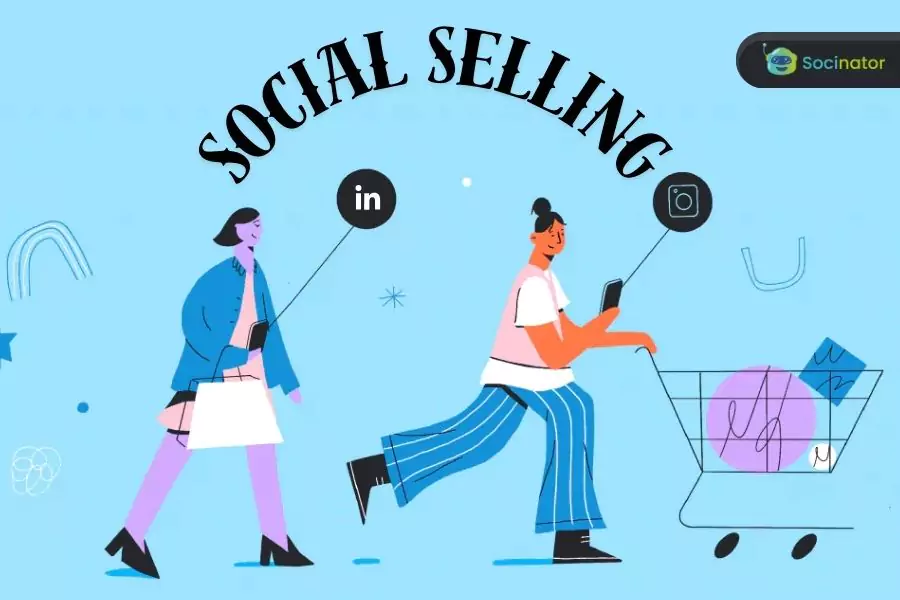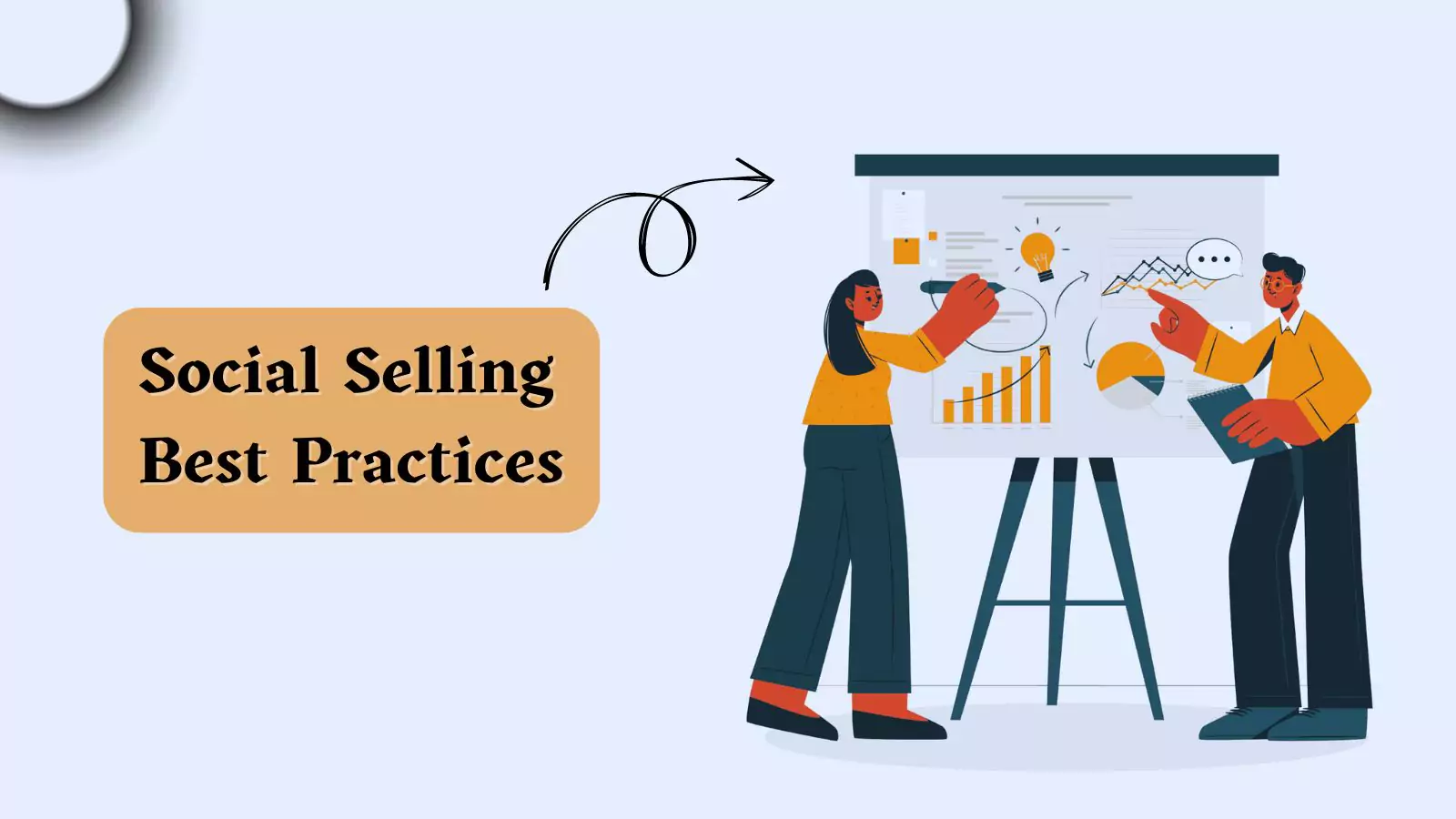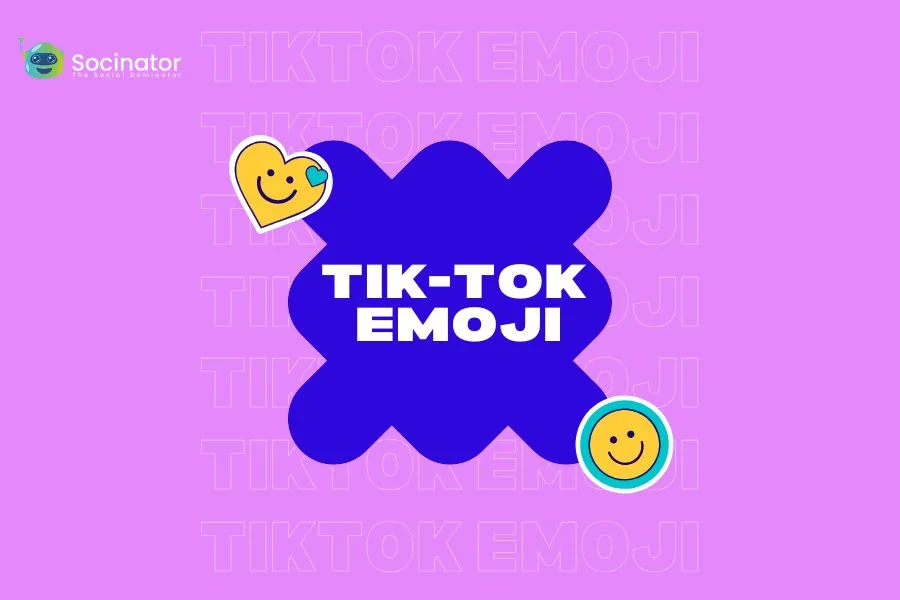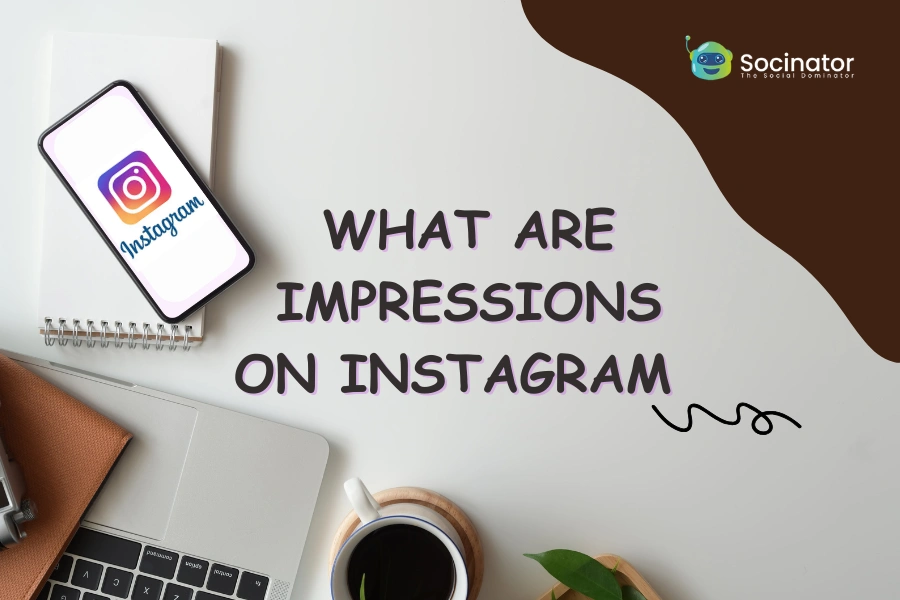With nearly half of the global population active on social media, utilizing effective sales techniques like social selling has become increasingly vital. Also referred to as virtual or digital selling, this approach is key for sales leaders who want to improve how they present their products, extend their reach, and drive revenue growth.
Social media selling is a strategy aimed at generating- leads by allowing salespeople to engage directly with prospects on social media platforms. This method redefines the typical customer-company transaction, promoting more authentic and natural relationships with potential clients.
Join us as we explore how social selling can redefine your sales approach and drive meaningful business outcomes.
Listen To The Podcast Now!
What Is Social Selling?
Social selling is a strategic approach for sales professionals to establish connections and nurture relationships with potential customers through social networks. In recent times, social media selling has evolved into virtual selling, leveraging not just social media but also- sales technology to engage buyers effectively.
This method enables salespeople to build credibility, foster trust, and achieve their sales objectives by leveraging digital channels and advanced communication tools. This shift from traditional sales tactics, such as cold calling, highlights the importance of using social media platforms and integrated sales technologies to actively- engage prospects and cultivate meaningful business relationships.
Why Is Social Selling Important?
Social selling represents a significant advancement over traditional sales methods, which often lack- personalization. By directly engaging with customers through actions like commenting, liking, and sharing their posts and utilizing tools like LinkedIn Sales Navigator, companies can organically build credibility and achieve free advertising, effectively converting prospects into customers.
According to the 2022 LinkedIn State of Sales report, top-performing salespeople, defined as those exceeding 150% of quota-are more than twice as likely to have expanded their LinkedIn network in the past year (53%) compared to their average peers (25%).
Still, questioning the importance of digital selling for your company? Let’s delve into the facts:
- Leaders in virtual selling generate 45% more sales opportunities compared to peers with a lower Social Selling Index (SSI).
- Businesses that prioritize digital selling are 51% more likely to achieve their sales targets.
- 78% of companies leveraging digital selling outperform those that do not.
The internal study shows a clear link between sales representatives with a high Social Selling Index and achieving sales goals.
Social media selling also fosters genuine connections, especially in the current- digital landscape. With more people active on social media, businesses have shifted from traditional networking venues to digital platforms for building relationships and finding prospects.
Moreover, the rise in e-commerce activity- means more consumers are researching products and brands on social media, making it a fertile ground for sales opportunities. In essence, virtual selling isn’t just beneficial- it’s essential for modern sales strategies offering tangible advantages in engagement, credibility, and ultimately- sales success.
3 Steps To Social Selling On Linkedin
Here are three steps to effectively utilize social selling LinkedIn:
Build Your Credibility:
- Seek Endorsements And Recommendations: Request endorsements or recommendations from your connections to enhance your profile’s credibility. These endorsements can serve as social proof to new contacts.
- Highlight Relevant Expertise: Make sure- your LinkedIn profile highlights expertise relevant to your target audience. Highlight past successes and how you’ve helped previous clients or customers achieve their goals.
- Share Credible Content: Only share on social media the information and content from reputable sources. Maintaining a professional tone across all LinkedIn activities helps establish trust and credibility.
Extend Your LinkedIn Network:
- Utilize Search Features: Use LinkedIn’s search functionality to find and connect with mutual connections of your existing contacts. Networking through mutual connections can help expand your reach within your industry.
- Join Industry-Relevant Groups: Join LinkedIn Groups that are pertinent to your industry. Engaging in group discussions allows you to network with peers and potential prospects, demonstrating your knowledge and expertise.
Use LinkedIn Sales Navigator:
- Targeted Prospecting: Utilizing the LinkedIn automation tool like Socinator, which helps you to identify and target the right prospects based on criteria such as industry, company size, and job role. Use advanced search filters to refine your prospecting efforts.
- Personalized Communication: Engage with prospects through personalized messages and content tailored to their interests and needs. Building relationships through thoughtful communication increases the likelihood of converting prospects into customers.
- Analytics And Insights: Leverage social media marketing tools to track and analyze your performance on Linkedin. Monitor engagement metrics, such as profile views and message response rates, to optimize your social selling strategy over time.
By following these steps, you can effectively use LinkedIn as a powerful platform for selling through social media. This will boost your credibility, grow your network, and create meaningful connections with potential clients or customers.
Using tools like Socinator can further optimize your efforts by automating routine tasks, allowing you to focus on building genuine relationships and engaging more strategically with your audience.
Socinator: Social Media Automation Tool
 Socinator is a hyper-effective digital selling tool that your team will find indispensable.
Socinator is a hyper-effective digital selling tool that your team will find indispensable.
It’s a powerful solution for building and nurturing relationships on social media, enabling your team to engage with prospects and customers effortlessly. Additionally, Socinator allows you to schedule thought leadership content across various key platforms. Plus, it provides comprehensive analytics to track performance and audience engagement, so you know exactly- what’s working and who’s paying attention.
Here are the key features of Socinator:-
- Activity Monitoring And Report Export: Socinator helps you keep track of your LinkedIn profile’s performance with comprehensive reports. Export these insights for future reference.
- Automated Connection Management: Seamlessly manage connection requests by automatically accepting relevant ones or sending requests yourself, ensuring a natural and risk-free process.
- Connection Cleanup Automation: Easily remove unnecessary connections on LinkedIn to maintain a more focused network, ensuring connections remain beneficial.
- Group Content Automation: Increase engagement by automating content posts in LinkedIn groups. The Socinator identifies and schedules posts in relevant groups, enhancing your outreach and impact.
With social media management tools like Socinator providing robust features and seamless automation, your team can elevate their digital selling efforts to new heights. Whether monitoring activities, managing connections, or automating content across LinkedIn and other platforms.
Social Selling Best Practices In 2024
It’s time to boost your e-commerce performance and enhance your sales.
1. Enhance Your Social Media Profiles:
To excel in social selling, start by enhancing your social media profiles. Your profiles are often the first impression potential customers have of your e-commerce business, so they should be compelling and engaging.
Ensure your business profile has an impactful profile picture. Craft a descriptive and welcoming bio that resonates with your target audience. Think of it as personally greeting your customers online. When writing your bio, always keep your customers in mind to provide them with a positive experience, build a strong reputation, and encourage purchases.
2. Selecting The Right Platform
With the rapid growth of social media platforms, online businesses can easily become overwhelmed and lose focus on where to concentrate their efforts to maximize sales.
Therefore, a crucial social selling strategy is selecting the most appropriate platform.
But how do you decide which platform is best?
While it may seem daunting, the answer is straightforward: choose the platform where your target audience is most active. To do this effectively, identify your target audience first and then conduct research to pinpoint their preferred social media channel.
Doing so ensures that your efforts are directed towards the optimal platform, maximizing your sales and boosting your revenue.
3. Sharing Valuable And High-Quality Content
Are you looking to drive sales through social media? Focus on delivering content that isn’t purely promotional.
Feeling uncertain? Let us clarify.
To effectively sell via social media, prioritize sharing valuable and high-quality content rather than just pushing sales messages. This approach resonates better with customers, enhances engagement, and boosts conversion rates.
You can share various types of content, such as industry insights, infographics, practical tips, and content from reputable sources like recent studies or industry updates. Whichever approach you choose, make sure- your content is compelling enough to capture customers’ attention and strengthen your brand’s credibility.
4. Maintain Consistency
To stay focused on your goals, it’s crucial to monitor the time you spend on social media. Consistency in posting and engaging on your channels is a key social selling strategy. The Socinator tool can help you achieve this consistency.
Disappearing from your audience can raise suspicions, and irregular posting can harm your credibility and trustworthiness. Moreover, periods of inactivity can lead to follower loss and decreased interaction upon returning. To avoid these pitfalls, establish a posting schedule that specifies how often you’ll share content- each week. Equally important, ensure your content remains relevant and valuable to your audience.
5. Target The Right Customers
Focusing your marketing efforts on a broad customer base isn’t the most efficient approach to virtual selling.
In reality, this strategy often results in spending excessive time and money for minimal conversion rates. Therefore, a crucial virtual selling best practice is to target the right customers.
The right customers are those who have shown interest in your products or have visited your website previously. Just as you actively seek potential customers, buyers are constantly searching- for products that address their needs. Capitalize on this by connecting with buyers who are actively seeking products similar to yours.
6. Engage In Relevant Online Communities
The rise of social media has fostered the creation of diverse online communities where users share interests, goals, and information through discussions.
To leverage this, engage in relevant online communities where your target audience participates. Monitor groups that align with your industry or product niche and actively participate in discussions.
For instance, if you’re in B2B sales, LinkedIn offers relevant groups and communities where professionals gather. Engage by responding to comments, reacting to interactions, and addressing inquiries from community members. By doing so, you’ll increase your visibility and stay top-of-mind among potential customers.
7. Utilize Referral Programs
Referral programs are a powerful word-of-mouth social media marketing strategy that incentivizes- customers to recommend your brand to others. This approach boosts conversion and retention rates and enhances brand trust.
Referral programs are considered a cornerstone of effective social selling practices. You can effectively generate more leads for your e-commerce business by leveraging them. Rather than solely reaching out to new prospects, you can encourage your existing customers to refer your products or services to others.
This method is particularly effective because people tend to trust recommendations from their peers more than traditional advertising or paid promotions. Therefore, tapping into- your customer base for referrals can significantly increase sales and strengthen your customer relationships.
8. Monitor Your Performance
Even after implementing all the social media selling best practices, it’s essential to continuously- monitor your performance. This step is crucial to ensure that your- strategies are effective and yielding results.
Identify key metrics and KPIs (Key Performance Indicators) to track and evaluate the success of your social media selling initiatives. For instance, monitor metrics like engagement rates such as likes, shares, and comments.
A high engagement rate indicates that your content is resonating- well with your audience, signaling that you’re on the right path. Most social media platforms offer built-in analytics tools that provide comprehensive insights into the performance of your marketing efforts.
Regularly reviewing these analytics allows you to make informed decisions, optimize your strategies, and maintain momentum in driving sales through digital selling.
9. Embrace Social Listening
Social listening involves actively monitoring conversations across various social media platforms to gauge sentiments toward your brand, competitors, and relevant keywords. It provides valuable insights into how your business- is perceived by customers, including what they appreciate about your products and where improvements are needed. Additionally, it allows you to understand customer perspectives on your competitors.
Being attentive to these conversations enables you to promptly address customer feedback, whether it’s criticism or praise. This proactive approach helps in resolving issues quickly and enhances customer satisfaction, thereby facilitating smoother transactions on your e-commerce platform.
10. Customize Your Communication
Tailoring your messages to reflect your understanding of customers’ interests and preferences is crucial in social selling.
Generic messages frequently fail to engage customers effectively. Personalization demonstrates that you value each customer individually, which can significantly impress them and increase their likelihood of making a purchase. Moreover, personalized communication plays a vital role in fostering stronger- connections with customers.
Also Read,
Expert Level Social Selling Tips To Increase Social Media Presence
What, When, And How To Share On Social Media To Improve Engagement
What Is Social Proof: Examples And Strategies For Success
Measuring Social Selling Success
To assess the effectiveness of your social media selling efforts and understand which strategies are driving success, LinkedIn provides a tool called the Social Selling Index (SSI).
Here’s how the SSI measures your digital selling performance using four key skill points:
- Establishing a Professional Brand: This involves optimizing your LinkedIn profile to create a strong professional social media presence.
- Finding the Right Prospects: Identifying and connecting with potential customers or clients who are likely to be interested in your products or services.
- Sharing Relevant, Useful Content: Sharing content that adds value to your network, such as industry insights, tips, and updates.
- Building and Strengthening Relationships: Engaging with your connections to build- meaningful relationships over time.
Each of these skill points is evaluated on a scale from 1 to 25. Your total SSI score, ranging from 0 to 100, reflects how well you are performing across these areas. A higher score indicates stronger social media selling proficiency.
To find your LinkedIn SSI score:
- Log into your LinkedIn account.
- Navigate to your Social Selling Index dashboard, where your score will be displayed.
Your SSI score serves as a benchmark to gauge your virtual selling effectiveness. It helps you pinpoint areas where you excel and areas that may need- improvement. LinkedIn Sales Navigator complements this by providing tools to enhance your digital selling strategy, enabling you to maximize your performance and achieve greater- success in leveraging social media for sales.
Wrapping Up
Social selling has revolutionized the way businesses engage with their audience. By leveraging social media platforms effectively- companies can build meaningful relationships, establish credibility, and ultimately drive sales. Socinator emerges as a powerful tool in this arena, streamlining processes and enhancing best capabilities.
It’s not just about transactions but about creating value through authentic interactions. As social media selling continues to evolve, staying informed about new trends and adapting strategies accordingly will be key to staying ahead- in the competitive landscape. Embracing the power of social media as a sales tool isn’t just advantageous; it’s becoming essential in today’s digital marketplace.









